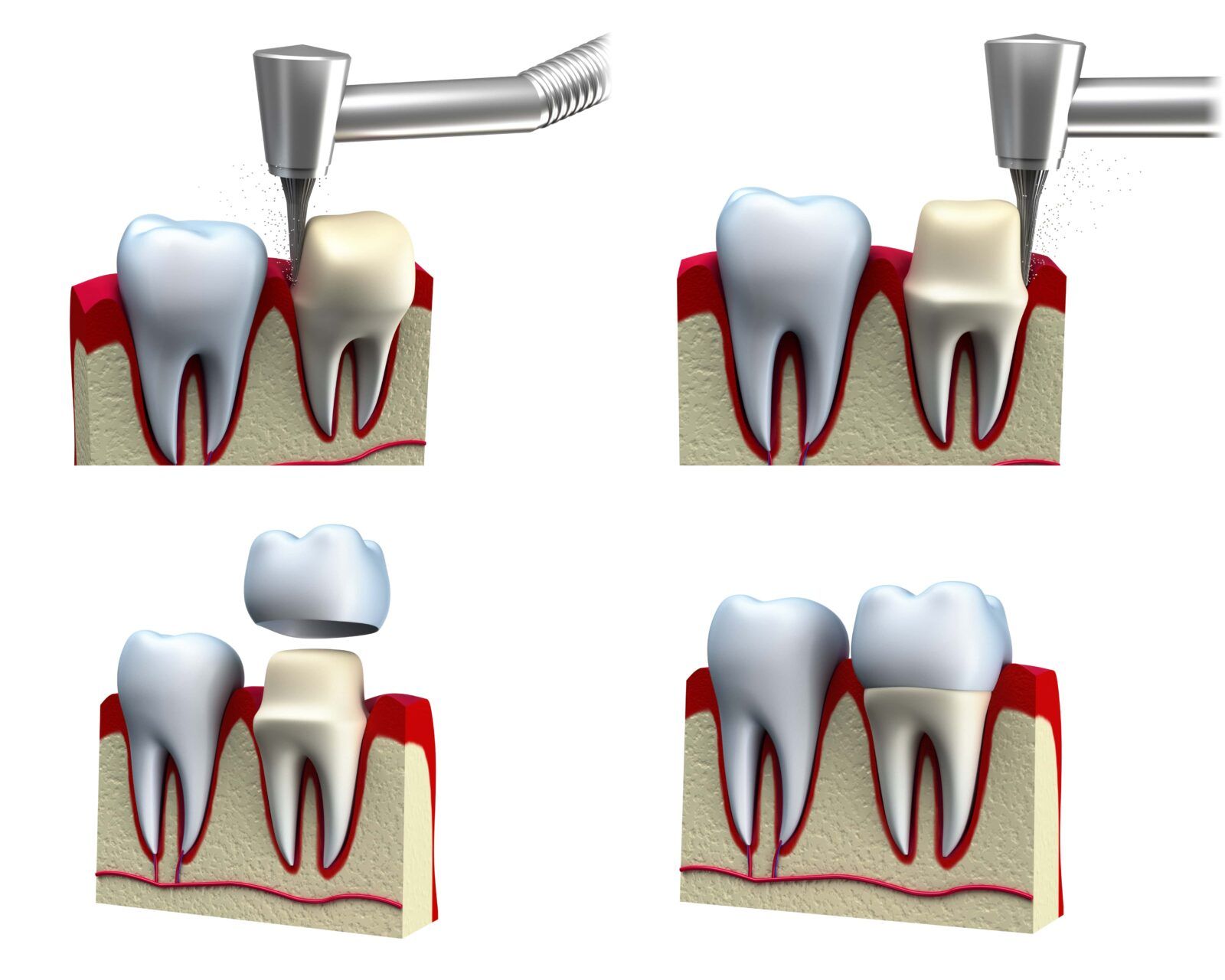Quick Contact
Mon, Tues, Thurs: 8AM - 5PM
Wed & Fri: 8AM - 2PM
Saturday: Closed
Sunday: Closed
Copyright © 2020 Optimized360® | Dental Websites by O360® | Privacy Policy | Terms of Use | Disclaimer | Web Accessibility Statement
Dental crowns are a cornerstone of restorative dentistry, offering both functional and aesthetic solutions for damaged teeth. In this blog, we’ll explore what dental crowns are, why they’re necessary, and the step-by-step process of having one placed.
A dental crown is a custom-fitted cap that covers the entire visible portion of a tooth above the gum line, restoring its shape, size, strength, and appearance. Crowns can be made from various materials, including porcelain, ceramic, metal alloys, or a combination of these. The choice of material depends on the tooth’s location, the patient’s aesthetic preferences, and the functional needs.
Dental crowns serve several important purposes:
Initial Consultation and Evaluation: Your dentist will examine your teeth, possibly take X-rays, and discuss whether a crown is the best solution for your dental needs.

The tooth receiving the crown is reshaped to ensure the crown will fit properly. This involves removing a portion of the tooth’s exterior. If the tooth is severely damaged, it may need to be built up with filling material to support the crown.
Once the tooth is prepared, an impression of your tooth is taken using dental putty or digital scanning. This impression is used to custom-design your crown so that it fits perfectly in your mouth.
A temporary crown is often placed to protect the prepared tooth while your permanent crown is being made. This temporary crown is usually made of a less durable material and is meant to be in place for only a short time.
The impression of your tooth is sent to a dental laboratory where your permanent crown is crafted. This process can take a few weeks, during which the lab technicians work to create a crown that matches the size, shape, and color of your natural teeth.
When your permanent crown is ready, you’ll return to the dentist’s office. The temporary crown is removed, and the new crown is adjusted as needed to ensure a proper fit and bite. Once everything looks good, the crown is cemented onto your tooth.
Your dentist will provide instructions on how to care for your new crown, including maintaining good oral hygiene practices and scheduling regular dental check-ups to monitor the health of the crowned tooth and surrounding gums.
Dental crowns are a versatile and reliable solution for restoring and enhancing the functionality and appearance of your teeth. With modern advancements in dental technology, the process of getting a crown is more efficient and comfortable than ever. If you suspect you might need a crown or are curious about improving your dental health, consult with your dentist to explore your options.